In the vast tapestry of world cuisines, few dishes capture the essence of a nation as eloquently as the Vietnamese spring roll. Delicately wrapped, bursting with fresh ingredients, and steeped in tradition, this humble roll is more than just a dish—it’s a story. A story of Vietnam’s rich agricultural heritage, its culinary ingenuity, and the communal joy of sharing a meal.
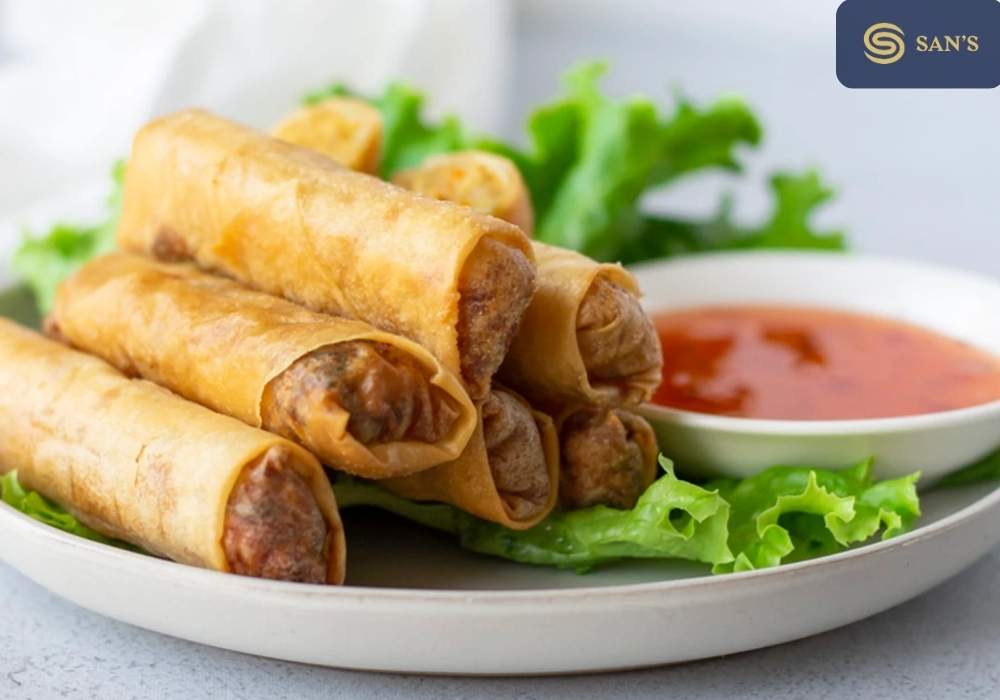
The Vietnamese spring roll, whether in its fresh incarnation as “Gỏi cuốn” or its crispy fried variant “Chả giò“, has emerged as a symbol of the country’s gastronomic identity. Its seemingly simple exterior belies a complex interplay of textures and flavors, a metaphor for the intricate tapestry of Vietnam’s history and culture.
This article aims to unravel the layers of this beloved dish, delving deep into its origins, variations, and the reason it continues to hold a revered spot on tables across Vietnam and the world beyond.
The Historical Roots of the Spring Roll
Venturing back in time, the origins of the spring roll in Vietnamese culinary history are as intricate as the roll itself. While some food historians believe that spring rolls might have originated from ancient China, making their way down to Southeast Asia through migrations and trade, they indisputably found a unique identity in the heart of Vietnam. Here, they evolved, adapting to the tastes, ingredients, and spirit of the Vietnamese people.
Centuries ago, as Vietnam thrived as an agricultural powerhouse, the abundance of rice cultivation led to the inception of rice paper – the core wrapping of the fresh spring roll.
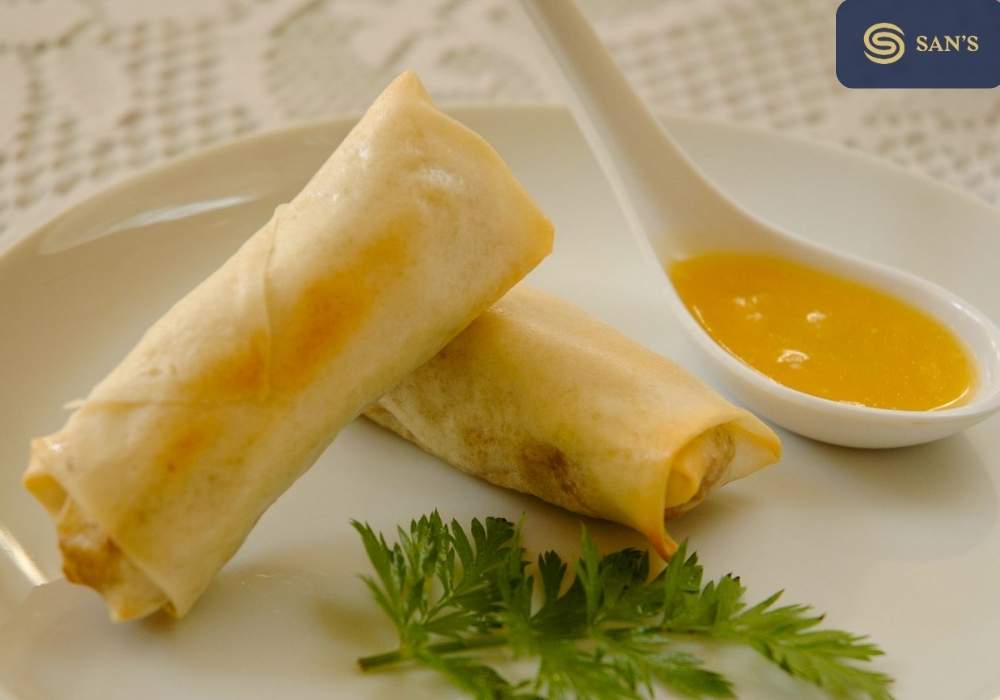
The fillings, often a blend of fresh herbs, shrimp, pork, rice vermicelli, and other ingredients, were reflective of the bounty of Vietnam’s fertile deltas. Over time, the spring roll wasn’t just a dish; it became a representation of the nation’s agricultural might and creativity.
Furthermore, the spring roll is intertwined with Vietnam’s historical milestones. From royal feasts in ancient Hue to the bustling street markets of colonial-era Hanoi, these rolls have borne witness to the changing tides of time, adjusting and adapting.
During periods of scarcity, fillings became simpler, and in times of abundance, they grew richer. Thus, the ever-evolving nature of the spring roll isn’t merely about culinary preferences; it mirrors Vietnam’s journey, its challenges, its triumphs, and its indomitable spirit. As we bite into the crispy or soft exterior of a Vietnamese spring roll today, we are tasting history—a delightful blend of the country’s past, present, and hopeful future.
Types of Vietnamese Spring Rolls
Vietnam’s culinary landscape is diverse, and so are its spring rolls. Two of the most renowned variations that have garnered international recognition are the Gỏi cuốn and Chả giò. While both hold the title of ‘spring roll’, they offer distinct flavors, textures, and experiences.
- Gỏi cuốn (Fresh Spring Roll):
- Ingredients: Traditionally, Gỏi cuốn comprises translucent rice papers rolled around succulent shrimp, slivers of pork, fresh herbs, rice vermicelli, and sometimes, bean sprouts.
- Regional Variations: The southern region, with its warmer climate, often includes a richer variety of fresh herbs in the roll. In contrast, central Vietnam might add additional meats or even local fish, reflecting its coastal geography.
- Dipping Sauces: Peanut sauce is a popular accompaniment, with its creamy texture and nutty flavor. In the north, one might find a more liquid, fish sauce-based dip with garlic, chili, and lime.
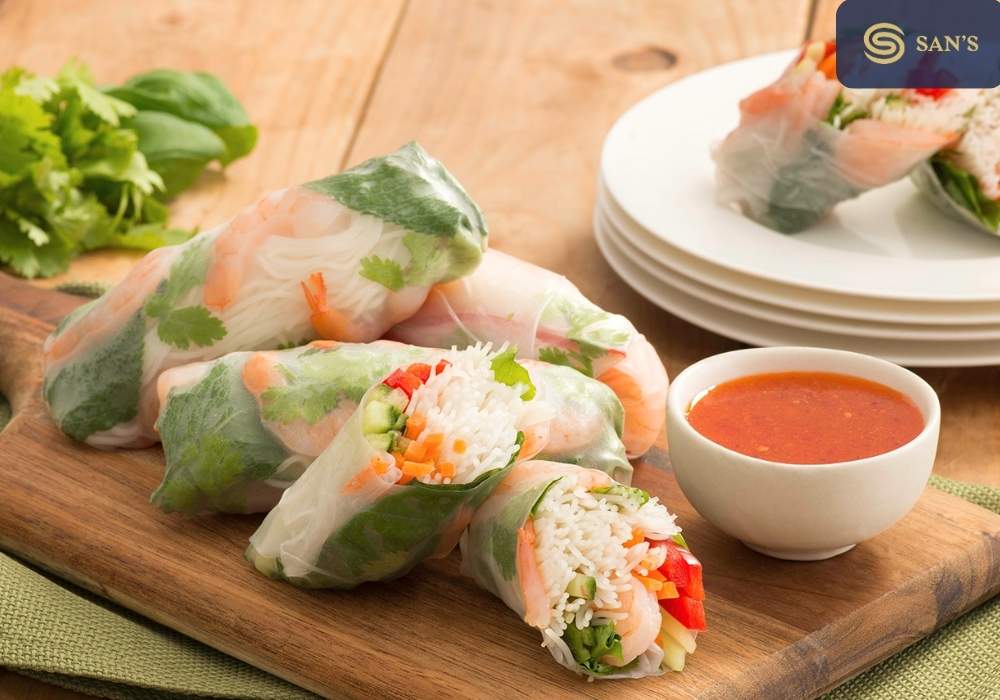
- Chả giò (Fried Spring Roll):
- Texture: The exterior is golden-brown and crispy, a delightful contrast to the tender filling inside.
- Typical Fillings: Ground pork, shrimp, glass noodles, wood ear mushrooms, and finely chopped vegetables make up the core. However, regional variations might include crab, taro, or even tofu for vegetarian versions.
- Wrapping Material: Unlike Gỏi cuốn, the wrappers for Chả giò can sometimes be made from yellow pastry, which provides its signature crunch when fried.
- Dipping Sauces: A tangy fish sauce mixture, light and flavorful, often accompanies Chả giò.
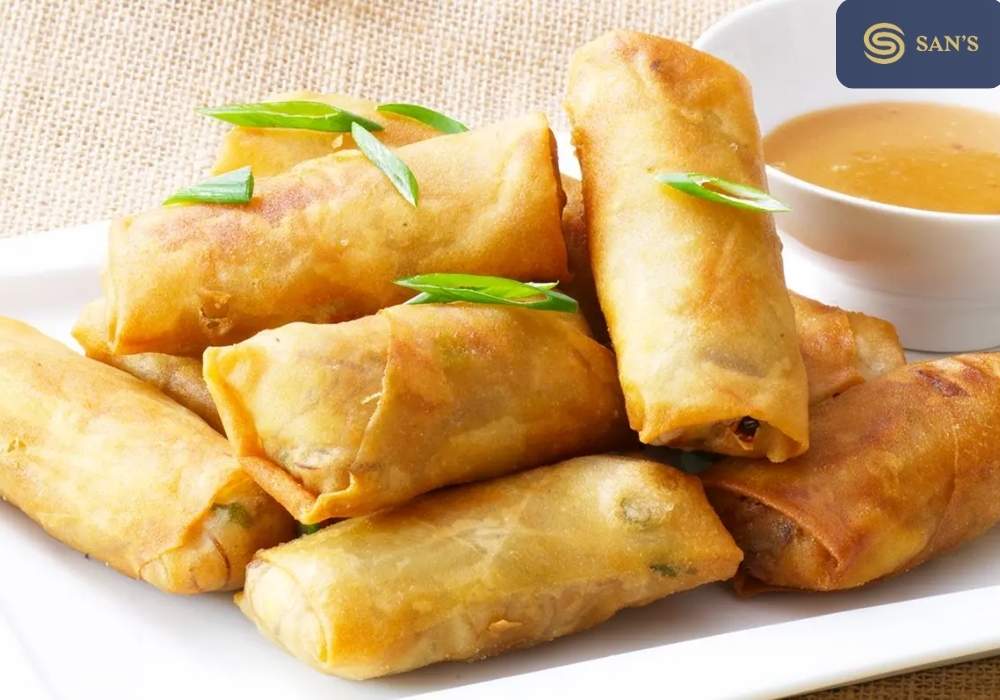
The Art of Rolling: Step-by-Step Guide
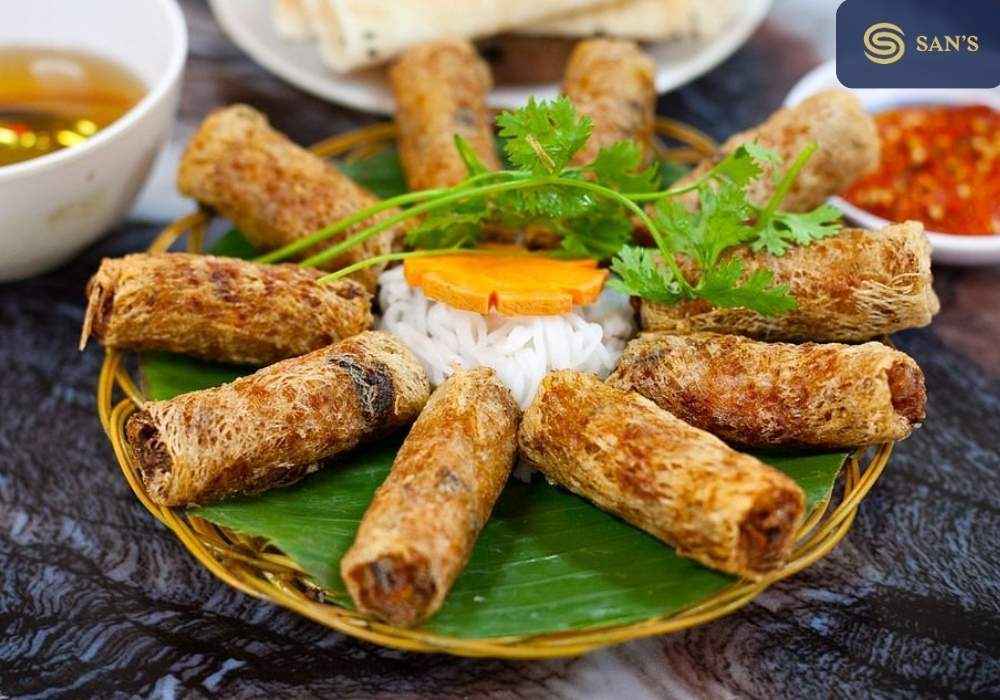
Crafting the quintessential Vietnamese spring roll is an art, marrying flavor and technique. A perfect roll is a symphony of fresh ingredients, a delicate touch, and a sense of proportion. Here’s a detailed guide to mastering this culinary craft:
- Choosing and Preparing the Right Ingredients:
- Rice Paper: Opt for a brand that’s not too thin or too thick. Store in a cool, dry place. When ready to use, quickly dip each sheet in warm water, ensuring it’s pliable but not overly soft.
- Fillings: Freshness is key. For Gỏi cuốn, select crisp vegetables and fresh, deveined shrimp. For Chả giò, ensure the ground pork and shrimp are fresh. Vegetables like carrots should be julienned finely, and mushrooms thinly sliced.
- Herbs: Use fresh mint, cilantro, or basil. Ensure they’re cleaned and free of any wilted leaves.
- Rolling Techniques for the Perfect Spring Roll:
- Placement: Lay out the damp rice paper on a clean, flat surface. Arrange your fillings in the center, leaving about 2 inches on each side for folding.
- Folding: Fold the sides of the rice paper inward over the fillings, ensuring they’re snug but not torn.
- Rolling: Begin rolling from the bottom up. Tuck in the filling as you roll, ensuring a tight wrap. The ideal spring roll is tight enough to hold its shape but not so tight that it tears or squeezes out the filling.
- Tips for Ensuring Consistency and Flavor:
- Size Matters: Consistency in the size of fillings ensures an even roll. For instance, if using shrimp in Gỏi cuốn, halve them lengthwise so they lie flat and roll evenly.
- Sauce Infusion: For Chả giò, a hint of fish sauce in the filling can elevate the flavor profile.
- Rolling Surface: A ceramic plate or a wooden board provides a good grip and avoids sticking.
- Resting: After rolling, let the spring rolls rest for a couple of minutes. This allows the rice paper to dry slightly, ensuring it doesn’t tear when eaten.
- Practice: Like any art form, rolling the perfect spring roll requires practice. Don’t be disheartened by initial imperfections. Over time, your hands will get the feel of the right tightness and proportion.
FAQs on Vietnamese Spring Rolls

- How long can you store Vietnamese spring rolls?
- Fresh Spring Rolls (Gỏi cuốn): Best consumed immediately after preparation. If needed, store them in the fridge for a few hours, covered with a damp cloth to prevent the rice paper from drying out.
- Fried Spring Rolls (Chả giò): Can be kept in the fridge for 2-3 days. For best results, reheat in an oven to maintain crispiness.
- Can I substitute any of the ingredients in the filling?
- Absolutely! While traditional fillings include shrimp, pork, vermicelli, and herbs, you can get creative. Substitute chicken for pork, or use tofu for a vegetarian variant. Remember to balance textures and flavors for the best results.
- Is there a vegetarian or vegan version of Vietnamese spring rolls?
- Yes, there are vegetarian and vegan versions. Instead of meat, you can use tofu, mushrooms, or tempeh as a protein source. For the dipping sauce, ensure you use soy sauce or tamari instead of fish sauce.
- What kind of sauces can be served with Vietnamese spring rolls?
- The most popular sauce is the peanut-based hoisin sauce, often garnished with crushed peanuts. Another favorite is the fish sauce-based dip mixed with garlic, chili, lime, and sugar. For a vegan version, use soy or tamari sauce as a base.
- Why is my rice paper either too sticky or too stiff?
- The key lies in the soaking time. Rice paper should be briefly dipped in warm water until it’s soft but still slightly firm, as it will continue to soften as you add the filling. If it becomes too sticky, you might have soaked it for too long.
- Can I freeze Vietnamese spring rolls?
- Fried Spring Rolls (Chả giò): Yes, they can be frozen before frying. When you’re ready to eat, fry them directly from the freezer; no need to thaw.
- Fresh Spring Rolls (Gỏi cuốn): It’s not recommended to freeze them as the texture of the rice paper and fresh ingredients may be compromised upon thawing.
- Are Vietnamese spring rolls gluten-free?
- Many spring rolls can be gluten-free, but it’s essential to check the ingredients, especially the rice paper and sauces. Some rice papers might contain a trace of wheat, and sauces like soy sauce typically contain gluten (though gluten-free options are available).





